
If you’re looking to build a Windows XP gaming system using a relatively overkill DX10 or DX11 AMD graphics card, you might want to avoid the latest official drivers. Read on to find out why.
How it Started
While testing the Radeon 3870 in early DX10 games on my Core2 Duo system under Windows 10, I was not impressed with its performance. Or to be more precise, I was underwhelmed and disappointed. We’re talking Crysis and Far Cry 2 framerates in the 20’s, and Call of Juarez framerates in the 30’s. And that’s not even on maxed out settings! OK, granted the 3870 was not exactly a DX10 powerhouse graphics card of its time. So surely, a much more powerful DX10 card like the Radeon 4890 would crush these numbers, right? Well, I pop in my Radeon 4890, only to see a few pitiful fps gained. More disappointment ensues. Aha, maybe an even more powerful Radeon 6970 would absolutely demolish these numbers, right? So I install my Radeon 6970, and all I see is a slight improvement into the 40’s. Those numbers look a bit suspicious. Now, I know someone right now is screaming “CPU bottleneck!” but these are games from 2006 – 2008, and a Core2 Duo should have no problems running these. At this point, I get curious, so I pop in a Geforce 550ti just to see how a card from Nvidia would handle these tests. And surprise – the 550ti is beating the 6970, and finally putting up the kind of numbers I expected, in the 50’s! But wait – the 6970 is a much more powerful card, and under normal conditions should demolish a 550ti. Even more strangely, in the Call of Juarez DX10 automated benchmark, the 6970 clearly wins with 96 average fps, versus 54 average fps for the 550ti. But in actual gameplay, it’s slower! Something is definitely wrong with the performance of AMD cards in this situation.
-Aha, you say, But you’re using old graphics cards and games with a much newer operating system!
-An excellent point! So let’s test the cards in Windows XP, and see how they handle some late era DX9 games!
How it’s Going
We have a test system with Core2 Duo E7300 2.66GHz processor, a Gigabyte 965P motherboard, 2x 2GB DDR2-800 memory, and a 120GB hard drive with Windows XP SP3. A somewhat typical, no frills system someone might build for playing DX9 games. And in typical fashion, we’ll be combining it with overkill DX10 and DX11 graphic cards, because at 1920×1080 resolution we don’t want to be limited in performance by DX9 cards in games like Stalker, Crysis, Fallout 3, and Borderlands. I will test several AMD Radeon cards, and use several driver versions for each card, to see what driver gives the best performance, and if some drivers are causing poor performance.
For testing, I load a saved game with MSI Afterburner running, and take note of the framerate at that specific save point. Typically the framerate fluctuates +/- 1fps even when standing still, so I recorded the statistical mode of the numbers, or the number that appears most often. l consider a 1fps difference within margin of error, and we’re interested in bigger differences. In some games like Clear Sky, the frame rate can even fluctuate +/- 10fps on fast DX11 cards. So as a sanity check, I also ran a few automated benchmarks for Far Cry 2 (Ranch medium, 1920×1080, no AA, high preset, medium tree/fire/physics) and the downloadable Clear Sky benchmark (1920×1080, enhanced full dynamic lighting, default preset). The Clear Sky benchmark gives four results – Day, Night, Rain, and Sunshafts. I will use the Day result as it’s more representative of how the game actually looks, compared to the more stressful Sunshafts test. The Night and Rain tests are even less stressful, so I will omit those. The results will be rounded to the nearest whole number, to keep the focus on meaningful differences.
The following are some screenshots from the games I tested at the save locations I used.
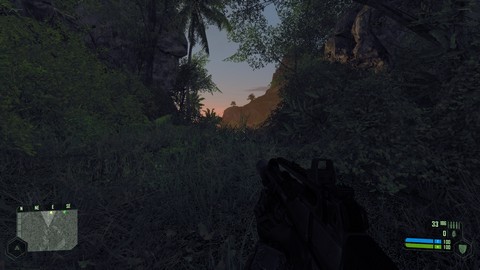
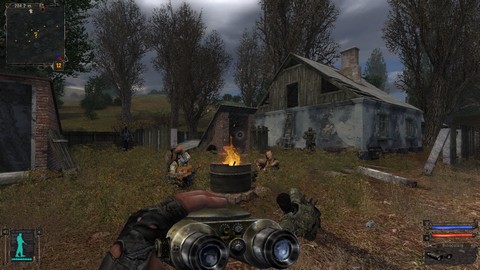
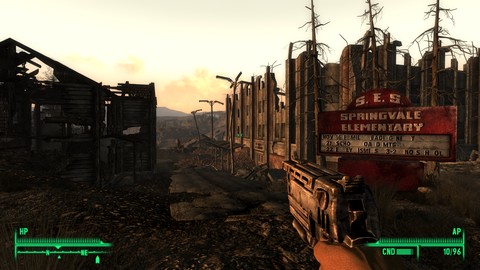
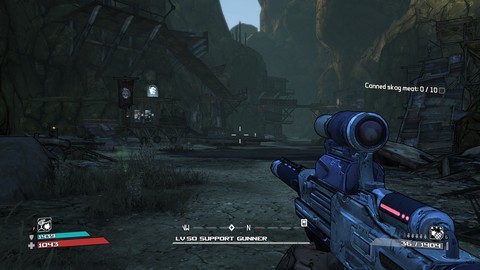
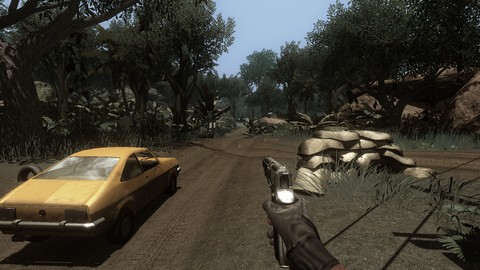
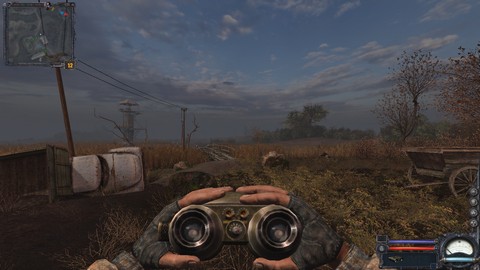
Radeon HD 4890
| Catalyst 10.2 | Catalyst 11.5 | Catalyst 12.4 | Catalyst 13.1 | |
| Crysis | 49 | 47 | 42 | 42 |
| Stalker | 65 | 64 | 58 | 41 |
| Fallout 3 | 48 | 47 | 49 | 17 |
| Borderlands | 35 | 33 | 26 | 24 |
| Far Cry 2 | 58 | 57 | 55 | 42 |
| Stalker: Clear Sky | 82 | 81 | 70 | 51 |
| Clear Sky bench | 43 | 43 | 39 | 30 |
| Far Cry 2 bench | 70 | 68 | 67 | 57 |
The first card in our test is the Radeon HD 4890 from the year 2009 – a high end DX10 graphics card. The earliest driver Catalyst 10.2 from year 2010 puts on the best performance. It’s a driver I had saved since back in the day, so there must be a reason I kept it. Next up is the year 2011 driver Catalyst 11.5, and it’s already lagging slightly behind. You can say it’s within the margin of error, but it is 1 – 2 fps slower across all games. Then comes Catalyst 12.4 from year 2012, and things have taken a noticeable turn for the worse. Other than Fallout 3, all the games have dropped in performance, and Borderlands is now below 30fps, something you would definitely notice while playing. So you might be tempted to “upgrade” to Catalyst 13.1, the latest official XP driver for the 4890 from the year 2013, thinking newer drivers should improve performance, but that would be a terrible mistake! Catalyst 13.1 drops performance even more, with the biggest victim being Fallout 3, now stuck at a miserable 17fps! What can possibly be a good explanation for this? Now, I’m not saying that AMD is intentionally making new drivers slow down old cards… but the new drivers are slowing down old cards. Maybe they’re being optimized for newer architectures? Let’s see if that theory holds true.
Radeon HD 5770
| Catalyst 10.2 | Catalyst 11.5 | Catalyst 12.4 | Catalyst 14.4 | |
| Crysis | 44 | 44 | 44 | 44 |
| Stalker | 62 | 58 | 58 | 42 |
| Fallout 3 | 40 | 40 | 42 | 16 |
| Borderlands | 28 | 27 | 27 | 25 |
| Far Cry 2 | 53 | 51 | 52 | 45 |
| Stalker: Clear Sky | 75 | 75 | 75 | 54 |
| Clear Sky bench | 44 | 44 | 45 | 35 |
| Far Cry 2 bench | 65 | 63 | 65 | 58 |
The Radeon HD 5770 is an early midrange DX11 card from 2009, featuring 800 shader ALU’s and 40 texture units just like the Radeon HD 4890, except using a 128-bit memory bus. It should perform slightly slower than the 4890 overall. Again we start with Catalyst 10.2, and just like before, this driver delivers the overall best performance. The surprise here is that Catalyst 11.5 and 12.4 also put up excellent numbers, falling within margin of error in almost all tests compared to Catalyst 10.2. So maybe there is some truth to the theory that Catalyst 11.x and 12.x were being more optimized for DX11 cards, to the detriment of DX10 cards. Or maybe the Radeon HD 5770 is already being pushed to the limit by all the games, and there’s no room for driver fudging. But look at the disaster with Catalyst 14.4! Again, this is the latest official XP driver for the card, and just like with the Radeon HD 4890, the latest official driver is causing significant performance drops across the board. Even Fallout 3 drops to a 16fps slideshow just as before.
Radeon HD 6950
| Catalyst 11.5 | Catalyst 12.4 | Catalyst 13.4 | Catalyst 14.4 | |
| Crysis | 78 | 81 | 80 | 80 |
| Stalker | 76 | 80 | 60 | 62 |
| Fallout 3 | 47 | 49 | 19 | 19 |
| Borderlands | 51 | 52 | 44 | 44 |
| Far Cry 2 | 63 | 68 | 58 | 58 |
| Stalker: Clear Sky | 93 | 93 | 79 | 79 |
| Clear Sky bench | 55 | 57 | 48 | 48 |
| Far Cry 2 bench | 74 | 80 | 72 | 71 |
The Radeon HD 6950 is a late era DX11 card from the end of 2010, and features not only much more execution resources, but also a redesign from the VLIW5 to the VLIW4 ALU architecture, which promised to make more efficient use of resources. Overall it’s about twice as powerful as the previous two cards. We start off with Catalyst 11.5, which puts on a good show of performance. When moving to Catalyst 12.4, we actually get a pleasant surprise for once, with consistent improvements across the board from a newer driver. But in Catalyst 13.4 things take a sobering turn for the worse, with significant drops in performance in all games, and Fallout 3 becomes a 19fps slideshow just like with previous cards. The only consolation is that Crysis performance remains the same across all the drivers I tested on DX11 hardware. It’s almost as if Crysis earned itself a reputation for being a popular benchmarking application, if not an interesting game with great replay value. Well, at least you can safely “upgrade” to Catalyst 14.4 with this graphics card, because the performance did not get any worse. It just remained at the same disappointingly low level as with Catalyst 13.4.
Go to Part 2 – AMD Catalyst Slow Performance in Windows XP: The Mystery Deepens
Bonus content
All the Radeon cards sometimes produced incorrect shadow rendering in Borderlands. There was seemingly no combination of card and driver that would avoid the problem altogether. Generally, changing the game resolution and dynamic shadows option back and forth got rid of the problem after one or several attempts. Below are some screenshots for your amusement.
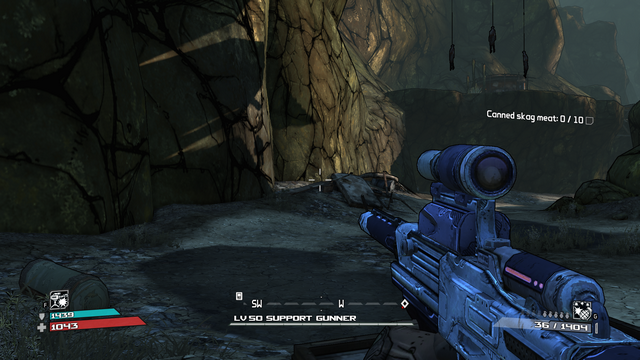
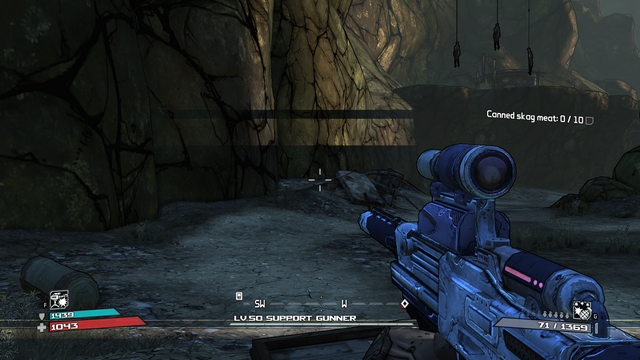
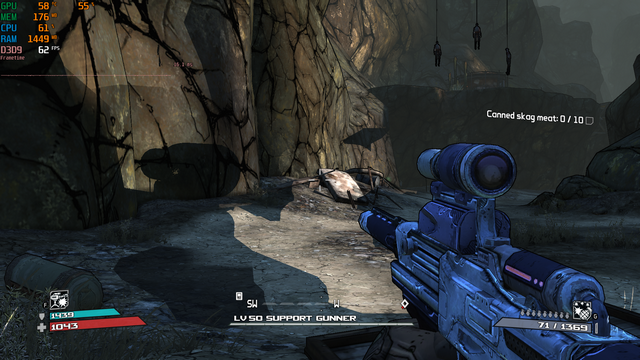
And now for some answers to curious inquiries and nitpicking you might have but were afraid to ask.
Q: Is MSI Afterburner causing the performance drops? Did you try Fraps? Did you try not using either?
A: I tried Fraps, and the result was the same as with Afterburner, within 1fps margin of error in a few cases, but mostly producing identical numbers. I also tried not running any monitoring software. At 19fps, Fallout 3 feels like a slideshow even without performance monitoring on screen display.
Q: But CPU bottlenecking! Maybe newer drivers need a faster CPU!
A: Just for you, I briefly tested the Radeon 5770 and Catalyst 14.4 with the processor clocked at 3.16GHz, 316MHz base clock, and memory running at a rating of 842MHz. I also used Fraps instead of Afterburner. So with a 500MHz boost to the CPU, I saw a 1fps gain in Far Cry 2 and 1fps gain in Clear Sky. The other games produced identical results to those at stock clocks (I did not run the automated benchmarks in this case). Not even close to making up the loss in performance compared to earlier drivers.
Q: But did you play the game, or just load a save and stand still? Maybe performance improves when playing?
A: No, I regret to inform you that no such miracle occurred. After loading the saved game, I played for about a minute, and in cases where performance took a nosedive from newer drivers, it did not return to previous levels while playing.
Q: Didn’t you say you had a Radeon 6970?
A: I do, but it decided to throw temper tantrums after I disassembled it, cleaned it, reapplied thermal paste, and reassembled it. So did my Radeon 4890 for that matter. After a second reassembly they both seem to be back to normal. That may be an interesting topic for a future article, but for now, the cooler and less power hungry Radeon 6950 was pressed into service.
Q: Any other problems with the drivers?
A: Why, yes! In almost every case the latest Windows XP Catalyst driver for a given card refused to install normally, because it wasn’t signed. And that’s even if you tell Windows to not enforce driver signing. So I had to extract the driver package, and manually install it using the “Update Driver” option from Device Manager. Even more annoyingly, the 14.4 XP drivers are divided into three separate packs to download. And while the page to download 14.4 for the Radeon 6950 gives you pack2, installing the driver asks you for a file located in pack1. I’m starting to suspect AMD gave about as much thought to their late Windows XP drivers as Nvidia did to their late Windows 98 drivers.
Q: What about OpenGL games?
A: The latest, most demanding OpenGL game that I know runs on Windows XP is Prey from 2006. The game has a limit of 62fps, and even with the slowest driver version, it ran at a steady 60 – 62fps on the Radeon 4890, at 1920×1080 resolution with maxed out settings. There is also Doom 3, but I have zero interest in even installing and launching Doom 3, nevermind actually playing it. Finally, there is Quake 4, and if I ever get around to installing the game, it might be useful for a timedemo, if not actually playing it. But for now, my verdict is that all these cards are too powerful to be sabotaged by crappy drivers in OpenGL games from 2006 or earlier.
Q: If you go from a later driver back to an earlier one, does performance increase?
A: Yes it does. So it’s not that installing different drivers increasingly messes up the system. After uninstalling a newer driver and reinstalling an older one, performance goes back up to the levels previously observed with that driver.
Q: Will you do more driver testing?
A: Yes, definitely. After opening this Pandora’s box, it raises further questions about other graphics cards, other operating systems, and other test platforms. I will investigate these in future articles.
Related Posts
Go to Part 2 – AMD Catalyst Slow Performance in Windows XP: The Mystery Deepens